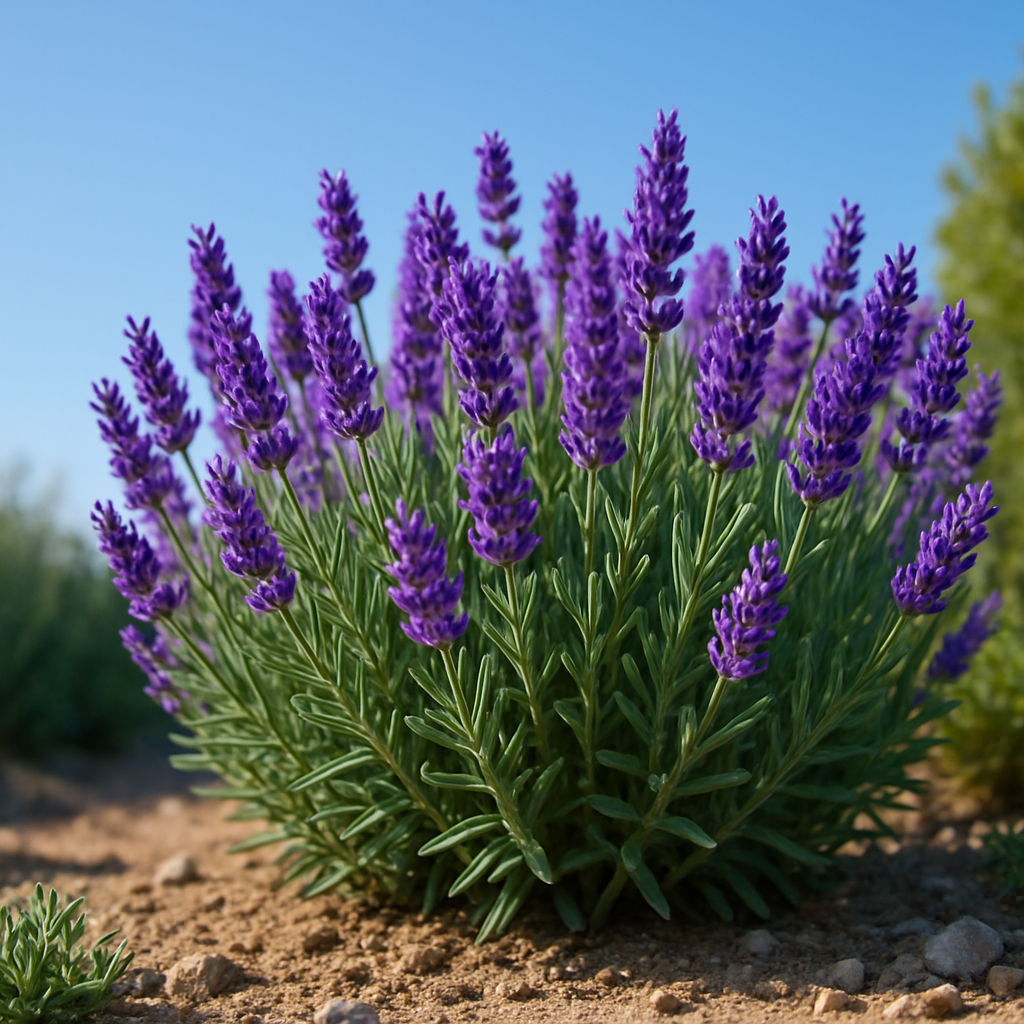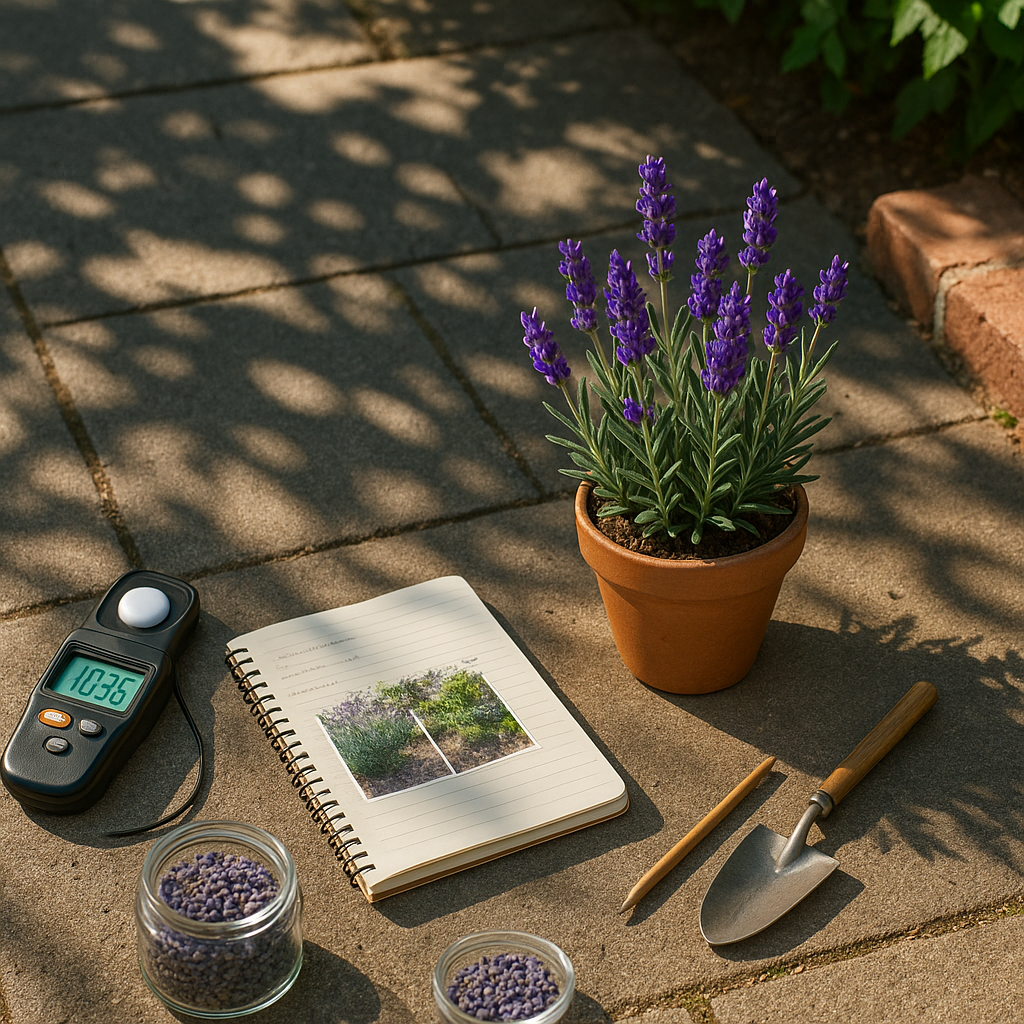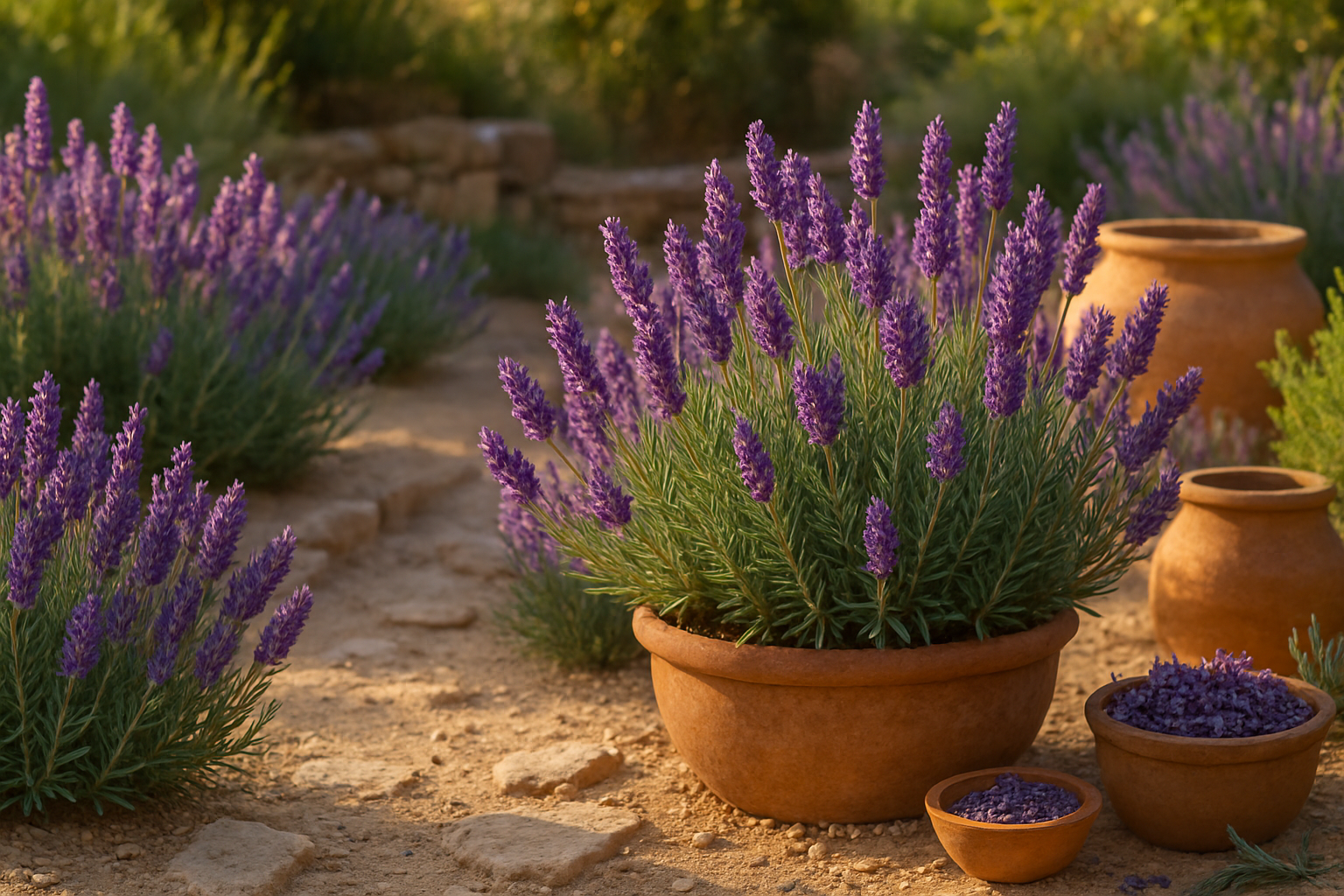Understanding Lavender’s Sunlight Needs

Sunlight is one of the most crucial factors for growing healthy, vibrant lavender plants. Lavender thrives on abundant sunshine, using sunlight to fuel photosynthesis and oil production, which are key to its iconic fragrance and robust growth.
In gardening, “full sun” means at least six to eight hours of direct, unfiltered sunlight each day, while “partial shade” refers to just three to six hours of direct light, often with protection during the hottest part of the afternoon.
Experts, including horticulturists from the Royal Horticultural Society, recommend full sun for nearly all lavender varieties—especially English (Lavandula angustifolia), French (Lavandula dentata), and Spanish (Lavandula stoechas).
These sun-loving varieties will appear fuller, flower more profusely, and produce better essential oils when exposed to consistent sunlight. If tucked into a shady spot, lavender often becomes leggy, with stretched stems, pale leaves, and fewer blooms. Prolonged shade can invite fungal diseases and stunt growth, leading to disappointment for gardeners hoping for lush purple blooms.
If you live in a very hot climate, providing a bit of afternoon shade can help prevent sun scorch. But generally, seek out your brightest, sunniest space for lavender.
A helpful tip: observe your yard or balcony throughout the day before planting, ensuring your lavender will bask in the light it craves. With the right exposure, your lavender will reward you with beauty, fragrance, and resilience year after year.
Choosing the Right Spot

Finding the ideal spot for your plants, whether outside or indoors, starts with understanding how much sunlight each location receives throughout the day. Begin by tracking the movement of sunlight in your yard or balcony—notice which areas get direct sun, partial shade, or remain shaded most of the day.
Spend a full day observing different spots at intervals (morning, midday, and late afternoon), and keep notes or take photos to capture the changes. Outdoors, south-facing areas typically get the most sun in the northern hemisphere, while north-facing spots are shadier; the opposite is true in the southern hemisphere. Investing in a sun calculator or a simple light meter can offer precise readings and simplify this task, especially for indoor spaces where light can be tricky to gauge.
Indoors, observe where sunlight streams through windows, noting how it shifts with the seasons and time of day—south-facing windows (in the northern hemisphere) are best for sun-loving plants, but even the sunniest window has less light intensity than a full day outdoors.
If your area is especially hot and dry, try to offer some afternoon shade to prevent scorching, while in cooler climates, maximizing sun exposure is key for healthy growth. Don’t forget that buildings, trees, and even seasonal changes can create new shade patterns, so reassess every few months.
For truly light-hungry plants indoors, supplement natural light with grow lights when daylight hours are limited, ensuring your plants thrive year-round regardless of climate or space.
Effects of Too Little or Too Much Sun
Knowing how much sun your lavender gets is crucial to its health and beauty. If your lavender receives too little sunlight, you’ll notice signs like leggy, stretched-out stems as the plant tries to reach for more light. Blooms may be sparse or non-existent, and the plant can look pale and weak rather than vibrant.
On the other hand, too much sun can also cause problems, especially in very hot climates or when the soil is too dry. You might see brown, crispy leaf edges or overall leaf scorching, and the plant can become dehydrated, with wilting leaves even after watering.
To strike the right balance, aim for at least 6 hours of direct sun per day, but consider providing afternoon shade in hot regions or during heatwaves.
If your lavender is struggling in a shady spot, try these tips:
- Move it to a sunnier area.
- Prune back overhanging plants that compete for light.
For plants getting scorched, you can:
- Install a shade cloth during the hottest part of the day.
- Mulch around the base to help retain soil moisture.
Regularly check the soil and adjust your watering schedule as needed to keep lavender healthy and happy.
Companion Care
Lavender thrives in well-draining, sandy or loamy soil with a slightly alkaline pH of 6.5 to 7.5, matching its preference for full sun—ideally, six to eight hours of direct sunlight each day. In the garden, amend heavy clay soil with sand and organic matter to prevent root rot.
For containers, select a potting mix labeled for cacti or Mediterranean plants, and make sure the pot has ample drainage holes. Watering needs vary with light exposure—lavender in strong sun should be watered deeply but less often, only when the top inch of soil feels dry. Those in partial sun may need water just as sparingly since overwatering can cause stress. Always water at the base of the plant to keep foliage dry and discourage fungal diseases.
Airflow is crucial for healthy lavender, so place plants at least 18–24 inches apart in garden beds to reduce humidity and allow sun to reach all sides. In containers, opt for a single plant per pot or use large planters for a few, giving each space to breathe.
Container-grown lavender may dry out faster and will need more frequent checks, while garden plants are usually hardier and require less attention once established. By matching soil, water, and placement to lavender’s natural Mediterranean habitat, you’ll encourage lush growth, aromatic blooms, and hardy, disease-free plants—whether they’re basking in your backyard or brightening up your patio.
Sunlight Needs for Popular Lavender Varieties
When it comes to sunlight, not all lavender varieties are created equal. English lavender (Lavandula angustifolia) is the classic choice for many gardens, thriving best with at least 6 to 8 hours of full sun daily. This type is particularly cold-hardy and can handle intense sunlight, making it perfect for sunny borders or open beds.
French lavender (Lavandula dentata), with its frilled leaves and vibrant blooms, also prefers full sun but is a bit more forgiving in partial shade—especially in hot climates where afternoon shade can prevent leaf scorch.
Spanish lavender (Lavandula stoechas), recognizable by its “rabbit ear” flower heads, enjoys full sun too but tolerates slightly less light than the others, making it suitable for spots with a few hours of dappled light.
However, planting any lavender in deep shade leads to leggy growth and weak flowering, so sunlight remains key. For best results, ensure all lavenders are planted in well-draining soil to avoid root rot, and consider placing pots in movable locations if your garden gets variable sunlight.
In humid regions, opt for English varieties that cope better with damp conditions, and give all lavenders plenty of airflow to fend off fungal diseases.
Seasonal Adjustments for Lavender Sun Exposure
Lavender thrives on plenty of sunlight, but its light needs shift slightly with the seasons. In spring and summer, aim to give your lavender six to eight hours of direct sun daily—placing pots on a south-facing patio or in garden beds with minimal shade works well.
However, during intense summer heatwaves or extended droughts, especially in hotter climates, your lavender can get stressed from too much midday sun. Consider moving potted plants to spots with gentle morning light or using lightweight shade cloth between noon and 3 p.m. to prevent leaf scorch.
On the flip side, if you’re faced with prolonged clouds or rainy spells, try relocating indoor pots to the sunniest windowsill or supplement with a grow light for several hours a day.
As winter approaches and the sun sits lower, outdoor lavenders in cold climates need special handling—move containers to an unheated greenhouse or a sheltered, well-lit porch so they still get as much light as possible. If you grow lavender in the ground, prune back nearby plants that might cast winter shadows, and clear away snow accumulation to let weak winter sun reach the plant.
These seasonal tweaks keep lavender healthy, fragrant, and ready to burst into bloom each year.
Quick Answers to Common Lavender “Sun vs. Shade” Questions
Lavender thrives best in full sun, which means getting at least six to eight hours of direct sunlight per day. While some gardeners wonder if lavender can tolerate shade, it’s important to know that it prefers sunny, well-drained spots and will struggle in areas with less than six hours of sun.
Partial sun—defined as four to six hours daily—may keep lavender alive, but you’ll likely notice slower growth and fewer blooms. A common misconception is that lavender will “make do” in dappled shade or partially shaded garden beds; in reality, insufficient sunlight causes leggy plants, poor fragrance, and sparse blooms.
For those with less-than-ideal sun, try planting lavender in a movable pot so it can follow the sunniest spots throughout the season. Remember, the closer you replicate Mediterranean conditions, the healthier and more fragrant your lavender will be. Always prioritize sun exposure for the best results.
